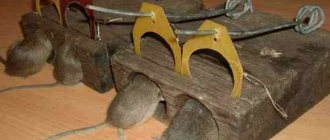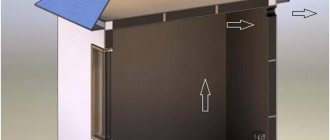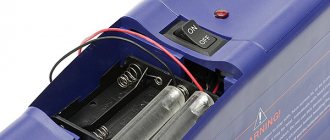Practice shows that self-made rat traps are more effective. After all, the rats are moving from another shelter, where purchased traps and traps could be used. The animals will already avoid them.
Before you get started, you need to watch a video of making the rat trap you are interested in, so as not to miss the details, and also take into account important aspects:
Rats are very smart and easy to train. And rat families are large. If one or two rats fall into the trap, it becomes temporarily useless: experience will prevent other individuals from getting there. Therefore, it is better to have several options.
Rats are strong animals and easily get out of the bucket. Therefore, it is necessary to pour water into the buckets used for traps or take high containers.
As bait, it is better to use lard, smoked meats, sausages - products with a strong odor. Although bread would also be good.
How to make a rat trap from a plastic bottle?
The simplest one: take a bottle and string it lengthwise onto the rod. Next, we place the rod on the edges of the bucket.
Lubricate the bottle completely with sour cream, stew or porridge. We build a bridge from a plank to the bottle.
The rat climbs onto the bottle along the bridge, the bottle spins and the rat falls into the bucket.
Cut the top of the bottle and open it slightly. We take the rod and attach a flagellum to it, which acts as a spring. We fix the rod itself in the notched part.
At the bottom of the plastic bottle, we attach a hook tied to the neck through a hole in the wall and string the bait. The animal pulls the bait, the top is pressed out and slammed shut.
The bottle with bait inside is placed on the edge of the table. The bottom should extend almost half way beyond the edge. We fasten the neck with a rope of sufficient length into a nail driven into the table or in a similar way.
The rat is able to climb inside through the narrow neck, and the bottle hangs under its weight.
Review of ready-made solutions
Many factory devices have been created that can rid the house and adjacent buildings of “uninvited guests.” Let's consider which of them you can purchase for your home, and which are better suited for agricultural buildings.
Wood Rat Trap
The latest technology that allows you to fully protect yourself from rats and mice. This is a wooden structure with a built-in spring mechanism. The attached diagram describes in detail the plan for using the device, which consists of placing the bait on the trap and instantly triggering the clamping device. Wood Rat Trap (rat) is placed in places where rodents actively move.
Works autonomously and is easy to use. Takes up minimal space and is easy to store. The average cost does not exceed 225 rubles.
SWISSINNO SuperCat
A drawing of this design looks like a small trap filled with a special bait similar to dough. Its natural composition is safe for home use. SWISSINNO SuperCat is equipped with a durable, heavy-duty spring, which ensures long-term and reusable use of the structure. To activate it, it is enough to remove the protective cap from the “delicacy” after pressing the handle.
Victor Electronic Rat Trap
Victor Electronic Rat Trap is an electronic device for catching rodents. Powered by 4 batteries, shocking the resulting electric current (8,000 V) to a rodent that has climbed inside the structure for the bait. When the red light comes on, you should free the structure from the animal trapped in it. Easy to operate and clean. The average price for Victor Electronic Rat Trap is 4,550 rubles. (batteries not included).
Rodentoff
The Rodentoff rat trap works on an adhesive base applied to a sheet of cardboard. There is no need to lay out the baits here, since they are already included in the kit. Stickiness is created by:
- rosin;
- rubber mass;
- mineral oil.
The coating contains attractants (attracting substances), and the design itself belongs to the category of rodenticides. When special compounds evaporate, rats run to the sticky surface, sticking to it. The average price is 100 rubles.
Antirats-190
This electronic trap is a small closed frame with bait inside. If a rat penetrates it, it instantly dies under the influence of an electrical discharge. Operates from a 220V network. The animal's corpse is easily removed thanks to the retractable lid. The price of the device is 3200 rubles.
GH-190
This is an electronic rodent exterminator with minimal electricity consumption, powered by sending powerful electrical discharges that kill the animals. The GH-190 is easy to maintain and only requires periodic cleaning of the unit.
The device is placed on a rat “highway”, from where the animals can get inside onto metal plates that are connected to a high-voltage direct current source. The lighting of a green light on the surface of the device signals the capture of an animal. The price of the device is 2100 rubles.
How to make the simplest rat trap with your own hands
Take the pan and turn it over. We lift the edge of the pan and rest it on a strip of cardboard placed edgewise. The bait is attached to the edge of the cardboard. The rat pulls on it, the strip tips over, and the pan covers the animal.
Similarly, instead of cardboard, you can use a coin. The bait is placed inside the container. When the animal crawls inside, it will knock over the coin and cover itself with a saucepan.
IMPORTANT: the pan must be heavy so that the rat cannot lift it.
Whatman paper with cuts is placed on top of the bucket. The bait is placed on it. Under the weight of its body, the rat will fall through the slits into the bucket.
Bark beetles in a wooden house - a description of how to get rid of the borer beetle. Tips on how to permanently remove dangerous parasites (105 photos)- How to get rid of bedbugs - tips on how to remove dangerous parasites from a house or apartment (115 photos and videos)
Cockroach trap: review of the simplest and most effective methods of catching cockroaches (125 photos)
Precautions
Rats
Now you need to consider ways to protect yourself.
In fact, there are quite a lot of options, you can adapt each method to your situation, it depends on the conditions.
Natural enemies. We must not forget about cats, mouse and rat hunters. Many people get cats for this very purpose. You should remember that. That wilder cats are better at hunting. You should not take purebred pets for this not so simple mission. You also need to remember. That some cats are good at catching mice. But they can't handle rats. These breeds include the Sphynx
An important condition is to vaccinate your pet against diseases transmitted by rodents in order to protect it. Repellent. Not always effective, but deterrents such as smell or sound can still be used
Rats have very sensitive receptors, especially for smells. Therefore, you can use substances such as ammonia, vinegar, kerosene or acetone. If you take sound into account, the most effective method is ultrasound. A person is unlikely to hear anything since he simply does not perceive these frequencies, and the rats do leave, but not for long. Poison. Not an effective method, but you can try. Rats are considered quite cunning rodents; their vitality often amazes even scientists. One of the main disadvantages of this method is that after death the rodent leaves behind a persistent smell of decomposition. Traps. Quite a radical method, but it is really effective. After using traps, a person will immediately understand that the rat no longer poses a danger. It cannot be ruled out that over time animals learn to bypass traps that have a guillotine mechanism.
To summarize, we can say that rats and mice cause great harm to people, so it is important to take care of your safety measures and protect yourself from meeting them. To do this, you need to make traps for them or order them online if there is no other option.
Glue traps
This is what you need to be careful with. Adults, and especially males, are large and strong. They are able to get out, and, as a rule, they get out of the glue and crawl away. Rather, the glue is only effective against baby rats (when they become the size of a mouse, they also go hunting).
It is important to choose a stretchable adhesive and spread it very thickly onto the piece of plywood. Place bait in the center.
Sometimes it is recommended to spread glue on the cardboard. But in this case, the adult rat will pull it along with it when trying to get out and may get stuck with it somewhere. The smell from the rotting body of the animal will make itself felt.
Electric rat traps
An electric rat trap kills a rat instantly. A small discharge of electric current kills quickly, leaving no trace. The device is powered by batteries or mains.
Rat Trap Victor Rat Trap
A versatile and powerful rat trap that delivers an instant electric shock. For user convenience, a light indicator is built in. Before installation, bait is placed inside the device and placed in the right place, and the rat trap is turned on.
The green light indicates operating mode. As soon as a rat gets inside, a high-voltage discharge (8,000 V) hits the animal (the discharge lasts for 2 minutes and the rodent has no chance). Electricity is generated by an electronic power unit
A red light indicates that the parasite has been captured and the device must be released for further work.
Buy now for RUB 4,500
- The rat trap requires 4 batteries (type C) to operate.
- Operating the device with one change of batteries allows you to kill 50 individuals.
The advantages of this rat trap are efficiency, safety for humans and reliable operation. For cleaning, do not use chemical hygiene products; for this you need a damp cloth or paper towels moistened with water. There is no need to remove the rodent carcass by hand; to do this, you just need to tip the box over.
The cost of the electric rat trap Victor is 4500 rubles
Please note that batteries must be purchased separately
The Victor trap can also be successfully used to catch mice. The device is an ideal rodent control solution for the home, garage, barn and other premises.
https://youtube.com/watch?v=gRrTrnwhItQ
Live traps for rats and mice
Mechanical rat traps are not suitable for rats if there are small children and pets in the house. In this case, choose a live trap for rodents. This is the best rat trap, the animal remains alive, there are no bloody traces, the device is reused.
Such devices are humane; they are used not only to fight rodents, but sometimes to capture escaped animals. It is a cell of different sizes, from small to large. This rat trap is suitable for large rats.
The animal gets inside, encroaching on the bait, one flap is activated by a spring and slams shut. The rat or mouse is imprisoned. It is necessary to check traps daily; without food and water, the animal dies after 3-4 days.
The photo shows a rat trap-live trap from Swissinno for large rats
- Material: wood, stainless steel, mesh diameter 0.9 mm, mesh 10*10 mm
- weight - 470 g
- Overall dimensions - 275*125*110 mm
The advantages lie in environmental safety, durability and repeated use. The cost depends on the size of the trap, usually prices start at 500 rubles.
Trap - glue trap
To kill mice and rats, a trap is used that “captures” the pests and holds them with glue. After unpacking, the Kapkan trap is immediately ready for use and is installed in the right place.
The manufacturer guarantees the use of non-toxic substances for the manufacture of glue and the safety of the product for people and animals. Due to its small size, a glue trap is more suitable for catching mice. The adhesive pad looks like a substrate with sides, filled with a special adhesive composition, which includes:
- 50% rubber
- 24% polyisobutylene
- 2% food attractant
- 4% mineral oil
The structure of the glue is non-toxic and non-poisonous, therefore it is recommended for use in rooms where people and pets may be present.
Once caught in a thick viscous mass, the animal cannot free itself and dies in agony; it is unlikely that there will be anyone who wants to see this picture.
- Installed based on a trap of 4 square meters. m. area.
- Cost - from 150 rubles
How to make a tunnel type trap
We take whatman paper or cardboard, roll it into a tunnel and attach it to the table with tape. You can take a piece of pipe. Half of the tunnel should hang over the edge.
At the end we put bait, again preferably with a strong aroma, although bread will do. Place a bucket of water or a tall container (barrel) down.
This trap is difficult to make, but effective. The entrance hole of the tunnel trap is made in the form of a valve with sharp needles directed inward. The rat will climb for the bait, but there will be no return because of the needles.
- Remedies for bedbugs: modern methods and tips on how to effectively remove bedbugs (110 photos + video)
- How to make a mousetrap: rating of the best models and tips on how to catch a mouse with your own hands (115 photos and videos)
How to get ants out of the house - reasons, methods and recommendations on how to get rid of them once and for all (100 photos)
Ways to control rodents
The process of killing rodents is called deratization. There are methods:
- biological;
- mechanical;
- chemical.
Each method has its own advantages and disadvantages. When choosing which one to use, you need to consider all the pros and cons.
Biological method
Cats are better at catching rats than cats
The most effective and at the same time safe way to get rid of rodents has been known since ancient times: ordinary indoor cats are best at catching and killing rats. It should be emphasized that it is cats, not cats. Males living in a city apartment are most often passive and unable to catch a cunning and dexterous rodent, although there are exceptions.
The second important condition: the cat must be old enough and strong enough, otherwise it will not be able to cope with the rat. The best choice for this purpose is not a purebred sissy, but an experienced huntress accustomed to living independently. Often it is enough for her to kill two or three rats so that the rest never appear in the controlled territory again.
Often it is enough for her to kill two or three rats so that the rest never appear in the controlled territory again.
In the future, for prevention, only her presence is enough: smelling the cat, the rats will avoid the apartment.
Mechanical method
Rat trap
It is best to use traps at the initial stage, when the first scout rat appears in the house, since this method will not work to get rid of the presence of several rats in the apartment: when one dies, the rest will quickly understand where the danger is coming from and begin to avoid it.
Glue traps used to catch mice are not suitable for catching rats - a strong and dexterous rodent, which is several times larger than a mouse, is freed from them without much difficulty. You can only catch a rat in a real trap that can quickly and sharply hit and stun it. An ordinary mousetrap, like a glue trap, is not suitable for this purpose - with its help you can only catch a young individual.
Bait is placed in the trap, which should have a fairly pronounced pleasant smell - cheese, smoked sausage, lard. Pieces of food must be secured so that the animal does not have the opportunity to remove it without falling into a trap.
To increase the chance of killing a rat, it is better to place two traps at once, one opposite the other, in a mirror image. In this case, if the rodent manages to avoid one, it may run into another.
Chemical method
Rats can be exterminated using toxic chemicals created specifically for this purpose. Top 5 similar tools:
- Goliath is a highly effective professional product used over a large area. The poison causes suffocation in rats. The cost of 1 kg is about a thousand rubles.
- Storm - the poison poisons the rat, accumulating in its body gradually, death occurs within 10 days, after which the corpse mummifies. Produced in briquettes, the cost of one is about 70 rubles.
- Inta-Vir also has mummifying properties. Price – 290 rubles.
- Zookoumarin is a powdered drug with anticoagulant properties that causes internal bleeding in rats, as a result of which they die within one week. The average cost of a package is 40 rubles.
- Ratfish - looks like grain bait soaked in poison. The price of a 100-gram package is 30 rubles.
The rules for using poisons, as well as their dosage, are indicated on the packaging. When choosing how to poison rats at home, you should take into account that almost all poisons have both advantages and disadvantages. Among the disadvantages are the high price (Goliath), decomposition of rat corpses in hard-to-reach places (Zookoumarin), and the rapid development of immunity in rodents (Ratsid).
If a rat manages to survive after consuming a poisonous bait, resistance to this type of poison appears not only in it, but also in its offspring, so independent attempts by the owners of apartments and houses to poison the bees are sometimes unsuccessful.
Cage trap
For manufacturing you will need a strong steel mesh, wood and metal panels, and a spring for the trigger mechanism.
The trap door opens upward with spring tension. A guard with a hook at the end of the cage is attached to it. The bait is attached to the hook. The rat pulls the bait and the door slams shut.
Fishing principles
Rats get used to one familiar bait. This means that it should not be kept in a rat trap for more than 3 days in a row.
It is better to replace it with a new bait more often in order to lure it out and not cause alertness or suspicion in the rat. Despite the fact that the animals are omnivores, they still like to give preference to their favorite foods, rushing into the trap. If mechanical traps are used, it is important to place them near the walls and block access to them for children and pets. It is worth keeping rat traps clean at all times. Handle them only with gloves. Regularly remove food products from the kitchen, leaving no food sources other than a mousetrap. Store cereals in glass or metal jars.
Zürner trap
It works on the principle of tipping traps. This is a one-piece, durable design. It can catch several individuals at the same time.
It is made in the form of a wooden house with two entrances. The filling is placed in the center of the corridor. And the boards from it are attached to hinges. Under the weight of the rat, the board lowers and then returns to its original position.
How to get rid of small midges - how to get rid of them once and for all at home (85 photos)- How to get rid of fruit flies - where do they come from and tips on how to quickly and easily get rid of fruit flies at home (105 photos)
Flies in the apartment: effective methods and recommendations on how to get rid of flies (110 photos and videos)
Instructions for making different variants
Tipping
As an option, you can make a rat trap with your own hands based on a tilting bar. To do this you will need:
- deep bucket;
- water;
- board 20×50;
- a cylindrical shaft slightly larger than the diameter of the bucket (knitting needle, hewn twig);
- bait;
- plank 10×30.
Now let's move on to the principle of operation. Fill the bucket about a third full so that the rats cannot jump out by pushing off from the bottom (they jump quite high). We rest a board on the edge of the side, along which the rodent will run after the bait. We attach a plank to the shaft (you can use Moment glue) and place the bait on the edge opposite to the plank. Thus, the rat, tempted by the treat, will end up in the bucket from whichever direction it enters. Even if she manages to climb onto the shaft, it will spin around the cylinder axis under its own weight and end up in the water.
From plastic bottles
This is probably the simplest and cheapest option for a DIY rat trap, and does not require much ingenuity. For this method you will need:
- plastic bottle 1.5 - 3 liters;
- sunflower oil;
- rope;
- bait;
- table.
The meaning of the design is as follows: cut a hole in the bottle so that the rat can get through. We place the bait at the bottom and attach a rope tied to the table from the neck side. Lubricate the entrance to the trap with oil. We place the bottle on the edge of the table so that its bottom is in the air. An animal sneaking behind the bait will outweigh the bottle and hang on the rope in the trap. A lubricated only exit will prevent the rat from getting out quickly.
Covering live trap
One of the most common ways. You can make such a rat trap with just a jar, bait and a coin. We place a one and a half liter jar with the neck down, resting the edge on a 5-five ruble coin so that it does not fall over on its own. Place a piece of cheese or any other bait on the wall opposite the coin. The rodent will not be able to climb into the jar without hitting the sensitive coin. One moment - and the rat will be trapped.
Cage traps
Not the most common, but one of the most effective options for catching small pests. Its difficulty lies in the fact that it is difficult to assemble the trap structure itself. You will need:
- steel wire 3 mm in diameter;
- spring;
- bait;
- base (a plank will do).
We twist a strong frame in the form of a cage, through the bars of which a rodent will not get through. We attach the metal structure to the base as firmly as possible. We place the bait on a spring connected by tension to a flap raised in front of the entrance to the trap. As soon as the rat pulls the bait, thereby weakening the spring, the flap will slam shut, and the rodent will no longer be able to get out of the cage.
Tunnel trap
An interesting type of homemade rat trap. In order to assemble such a structure, you will need:
The operating principle is as follows: we cut the bottle along the line where the cone from the neck goes into the cylinder. Next, we bend the paper clips to make straight wires. Using a lighter, we fuse them onto the neck from the outside in increments of about half a millimeter, so that we get a kind of metal frame for the wigwam. We spread glue on the inside of the second part of the container from the cut edge to 5-10 cm. Place the bait on the bottom of this part and insert the first part with the neck forward, fix it so that the glue sets. For larger rats, you can use five-liter containers. Liter bottles are also suitable for mice, the main thing is that the neck provides passage for the animal. The point is that the rodent will be able to get to the food, but will not be able to get out of the trap, since the paper clips, like spears, will not allow the pest to get out.
Silky
An ancient method that was invented a long time ago by hunters who hunted small forest animals. To do this you need to have on hand:
- ordinary plastic clamp;
- weight;
- bait;
- stand for bait.
It's quite simple. We fasten the weight with the food with a thread so that the bait does not fall from the stand ahead of time. We fasten the loop of the clamp with another thread, so that when the weight falls, the loop is tightened. This method is suitable for large rats, but it is not very effective for small ones, but it is still worth a try. Also, the bait must be fenced off so that the rat has no other approaches except through the clamp. Place the loop and bait so that when the rat reaches for the food, the loop is in the middle of the pest's body.
Zürner trap
The classic trap, the principle of which is used in many similar traps, is not necessarily for rats. To make it you will need:
- thin plywood 3x3 meters;
- springs with a small tension coefficient;
- glue.
We saw the plywood into pieces to glue together a rectangular box without one of the edges, 1 meter high and 1 meter wide. Next, we cut out a board from the same plywood to form a bridge from one edge of the box to the other, and divide it into two parts. We fasten two planks to the edges of the box opposite each other with springs so that they still form a kind of bridge. We glue a kind of roof for the box to the average length of the rat, 30-40 cm, and attach the bait in the center so that, in theory, the rat, standing on its hind legs, can reach the food. The secret of the trap is that a rodent that steps on the “bridge” will fall to the bottom of the box, and a piece of plywood, thanks to a spring, will return to its place. This trap is universal, but complex in design, so it is rarely used.
Glue traps
In household or hardware stores, you can often see glue with images of rats or mice on the shelves. This is a special glue for catching rodents. The scheme of actions is absolutely simple. We take a cardboard 20 by 20 cm, coat it with glue, and put food in the center. The pest will try to take possession of the food, but as soon as it realizes that it is in trouble in the literal sense of the word, it will begin to rush around chaotically and eventually become even more stuck. The disadvantage of this method is the painful death of the animal if it is not peeled off. Even though they are vile pests, they are still living beings. There is also a risk that a pet or a crawling child will get stuck in the glue, which is very difficult to wash off. Therefore, you should be very careful when handling these types of traps.
Electric rat trap
A relatively humane method for those who do not want to look for options on how to kill a caught rodent. The current discharge will do everything itself. To build such a structure you will need:
- base (wood);
- two plates of conductor;
- 12 V battery;
- two wires;
- food.
We secure the plates with self-tapping screws to the base. We put food in the opposite corner from the entrance. We connect the plus and minus batteries with wires to our conductors. We enclose the base with a kind of tunnel so that the rat is sure to step on both the first and second plates at the same time. Having thus closed the electrical circuit, the animal itself will become a conductor and die from the current running through it.
Wire noose
An interesting option for catching parasites, often used when hunting small animals living in burrows. For such a mousetrap we will need:
- wooden block;
- wood carving tools;
- wire;
- drill;
- threads;
- bait.
We cut a hole in the bar with a diameter of 5 cm and a length of 10 cm. We cut a gap from the top edge of the bar of such a size that the wire passes freely, i.e. 5-10 mm. We drill small through holes - 4 pcs. for passing threads. We twist the wire into a tight spring (2-3 turns are enough), and from the remaining longer length we make a loop with the diameter of the loop itself the same as the entrance hole of the mousetrap. We tie the threads through the holes and pull the wire, lowering the loop into the gap. We throw food inside the trap. In order for a rat to get to the bait, it will have to chew through the threads. The spring will expand, lifting the loop upward, which will strangle the rodent.
Photo tips on how to make a rat trap
Read here How to get rid of ants: reasons and methods for how to permanently remove ants with your own hands (105 photos)
Did you like the article? Share 
0
Option number 6: snare
Generally speaking, catching rats with snares is quite problematic due to the small size of the animals. However, if you try, you can still catch the pest, and there is even a small life hack that allows you to make such a rat trap with your own hands from improvised means.
For this you need:
- Cable tie;
- A piece of fishing line;
- Heavy load - for example, a wrench;
- Paper clip;
- Bait - for example, a crust of bread.
This is how a homemade rat trap made from a cable tie works in practice:
When making this trap, it is important to choose the right weight of the load. If it is too small, it will not tighten the tie with the necessary force, and the rat will run away. If the load is too heavy, then using such a structure as a live trap will not work - the animal’s ribs will be broken by the loop.
General information
Rats live not only in private houses, but also in apartments. Some apartment buildings are equipped with a garbage chute, through which rodents enter the staircase landing, and then into a person’s home. Owners of private houses and people involved in household work are faced with rodents. A distinctive feature of a rat from other types of rodents is its mental abilities, thanks to which it can survive.
In some cases, rat traps are ineffective because most people do not know how to use them correctly. In addition, a rat that has once been caught in a rat trap and survived is a difficult target to catch. Thanks to the instinct of self-preservation, she learns and subsequently avoids dangerous situations. There are known cases when the rat trap remained “loaded”, but there was no bait on the hook. There are many types of simple and very effective mechanical traps that you can make yourself at home.
Danger to humans
Rats are one of the signs of unsanitary conditions. The presence of food debris, warm rooms and humidity - all these factors contribute to their favorable existence. Multi-storey buildings are no exception. Residents of the first floors suffer especially from rodents. In addition, animals can live near a food source. Rats are very hardy and can travel long distances. They can enter the apartment through balconies, entrance doors and ventilation openings.
The main threats that rodents pose to humans are divided into two types: material and physical. The first type of threat is that they spoil food, furniture, clothing, and so on. Rats damage equipment by chewing through power cords. They destroy buildings by gnawing holes in the walls. The physical threat is the diseases they transmit to humans through their bite and feces. They carry dangerous diseases: leptospirosis, rabies, typhoid, and so on.
Features of using traps
DIY mechanical rat traps are the most reliable. The most common is the mechanical type rat trap. When an animal comes into contact with it, it dies immediately or remains until detected by a person. In addition, various types of poisons are used to kill rats, but they are not justified, since when poisoned, the rat crawls into its hole, which is located in hard-to-reach places. The rodent dies and begins to decompose, releasing a corpse-like odor.
Before using a trap (rat trap), you need to know the following rule: a rodent will not approach those traps from which it smells a human smell. You need to wear rubber gloves when setting the trap. Another rule to be aware of is that the trap must be placed against the direction the rat is moving.
Rodents move quietly and carefully near walls as they try to remain unnoticed. It is advisable to place the trap near a hole or rat feces
The rat trap is not placed in a visible place, since the likelihood of an animal getting into it is negligible.











